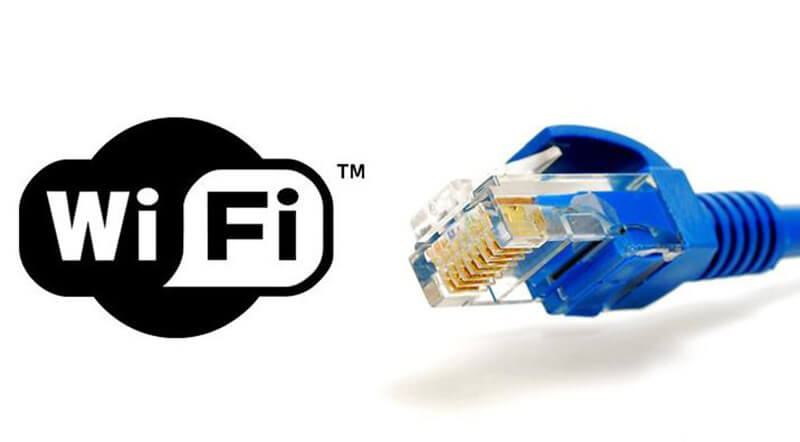Unraveling the Mysteries of Ethernet: Solving the Valid IP Configuration Conundrum
Understanding Ethernet and Wi-Fi connections
Understanding Ethernet and Wi-Fi Connections
If you’re encountering the “Ethernet Doesn’t Have a Valid IP Configuration” error, here are some steps to fix it:
1. Check Ethernet Cable: Ensure the cable is securely connected to your computer and router.
2. Reset TCP/IP: Open Command Prompt as an administrator and type “netsh int ip reset“. Restart your PC.
3. Update Network Adapter Drivers: Visit your device manufacturer’s website and download the latest drivers for your network adapter.
4. Disable/Enable Network Adapter: In Network Connections, right-click on your Ethernet or Wi-Fi adapter and select “Disable“. Wait a few seconds, then right-click again and select “Enable“.
5. Restart Router: Power off your router for a few minutes, then turn it back on.
6. Reset Network Adapter Settings: In Network Connections, right-click on your Ethernet or Wi-Fi adapter and choose “Properties“. Under the “Networking” tab, click “Internet Protocol Version 4 (TCP/IPv4)” and then “Properties“. Ensure both options are set to “Obtain an IP address automatically” and “Obtain DNS server address automatically“.
Differences between Ethernet and Wi-Fi connections
- Reliability: Ethernet connections are known for their superior reliability compared to Wi-Fi connections.
- Speed: Ethernet connections generally offer faster data transfer speeds than Wi-Fi connections.

- Security: Ethernet connections are considered more secure than Wi-Fi connections, as they are less susceptible to hacking or interference.
- Stability: Ethernet connections provide a stable and consistent network connection, whereas Wi-Fi connections can be affected by signal strength and interference.
- Distance: Ethernet connections have a limited range and require cables, while Wi-Fi connections provide greater mobility and flexibility as they are wireless.
- Compatibility: Most devices have built-in Wi-Fi capabilities, while Ethernet connections require the presence of an Ethernet port.

- Cost: Ethernet connections typically require additional hardware and cables, making them more expensive to set up compared to Wi-Fi connections.
Benefits of Ethernet and Wi-Fi connections
Ethernet and Wi-Fi connections offer various benefits for your internet setup. With Ethernet, you can enjoy a stable and reliable connection through the use of physical wires. This is particularly useful for tasks that require a strong and consistent internet signal, such as online gaming or video streaming. On the other hand, Wi-Fi provides the convenience of wireless connectivity, allowing you to connect multiple devices without the need for cables. However, if you encounter an “Ethernet doesn’t have a valid IP configuration” error, you can try some troubleshooting steps to resolve the issue.
First, ensure that your Ethernet cable is securely connected to both your computer and the router. You can also try restarting your computer and router to refresh the network configurations. If the problem persists, you can try resetting your TCP/IP settings by following these steps:
1. Press the Windows key + X and select “Command Prompt (Admin)”.
2. In the command prompt window, type netsh int ip reset and press Enter.
3. Restart your computer and check if the issue is resolved.
If you’re using Wi-Fi and encountering a “Wi-Fi doesn’t have a valid IP configuration” error, similar steps can be followed. Additionally, you can try updating your network adapter drivers, disabling and re-enabling the Wi-Fi connection, or resetting your network settings.
Disadvantages of Ethernet and Wi-Fi connections
1. Ethernet: One drawback of an Ethernet connection is that it requires physical wires, which can limit mobility and flexibility. Additionally, troubleshooting network configurations on a wired connection may require more technical knowledge.
2. Wi-Fi: Wi-Fi connections can be affected by interference from other devices or obstacles, resulting in a weaker signal and slower speeds. Wi-Fi also relies on a DHCP server to assign IP addresses, which can sometimes lead to IP configuration errors.
To fix an Ethernet connection that doesn’t have a valid IP configuration:
1. Open the “Network and Sharing Center” in Windows 10.
2. Right-click on the Ethernet connection and select “Properties.”
3. In the “Properties” window, select “Internet Protocol Version 4 (TCP/IPv4)” and click on “Properties.”
4. In the “General” tab, select “Obtain an IP address automatically” and “Obtain DNS server address automatically.”
5. Click “OK” to save the changes.
For Wi-Fi connection issues:
1. Open the “Network and Sharing Center” in Windows 10.
2. Click on “Change adapter settings.”
3. Right-click on the Wi-Fi connection and select “Disable.”
4. Wait for a few seconds, then right-click again and select “Enable.”
5. This will refresh the Wi-Fi connection and attempt to obtain a valid IP configuration.
Restarting devices to fix network configuration issues
To fix network configuration issues, restarting your devices can often do the trick. This simple method can resolve common IP configuration errors that may be causing connectivity problems.
First, restart your PC by clicking on the Start button and selecting Restart. This will refresh your system and network settings.
If the issue persists, restart your router and modem by unplugging them from the power source for about 30 seconds, then plugging them back in.
In some cases, you may also need to restart your network adapter. To do this, right-click on the network icon in your taskbar, select Open Network & Internet Settings, and click on Change adapter options. Right-click on your network connection and choose Disable. After a few seconds, right-click again and select Enable.
These simple restarts can often work wonders in resolving IP configuration errors and getting your network up and running smoothly again.
Disabling Fast Startup feature
To disable the Fast Startup feature on your Windows system, follow these steps:
1. Press the Windows key + X and select “Power Options.”
2. Click on “Choose what the power buttons do” on the left side of the window.
3. Click on “Change settings that are currently unavailable.”
4. Scroll down and uncheck the box next to “Turn on fast startup (recommended).”
5. Click “Save changes” to apply the settings.
Disabling Fast Startup can sometimes resolve the “Ethernet doesn’t have a valid IP configuration” error. This error occurs when your computer fails to obtain a valid IP address from the DHCP server.
Configuring network adapter settings
To fix the “Ethernet doesn’t have a valid IP configuration” error, you can configure your network adapter settings. Follow these steps:
1. Press the Windows key + X and select “Network Connections.”
2. Right-click on your active network connection (Ethernet or Wi-Fi) and choose “Properties.”
3. Scroll down and select “Internet Protocol Version 4 (TCP/IPv4)” and click on “Properties.”
4. Make sure both options are set to “Obtain an IP address automatically” and “Obtain DNS server address automatically.”
5. If these options are already selected, try selecting “Use the following IP address” and manually enter the IP address, subnet mask, and default gateway provided by your network administrator or Internet Service Provider.
6. Click “OK” to save the changes and then close the windows.
7. Restart your computer and check if the issue is resolved.
Resetting TCP/IP
Resetting TCP/IP
If you’re experiencing an “Ethernet Doesn’t Have a Valid IP Configuration” error, resetting TCP/IP can help resolve the issue. This method clears any IP configuration errors that may be causing the problem. Follow these steps:
1. Open the Command Prompt as an administrator.
2. Type netsh int ip reset and press Enter.
3. Restart your computer.
Resetting TCP/IP can often fix connectivity issues and restore your internet connection. It’s a simple and effective solution that can get you back online quickly.
Clearing the network cache
To clear the network cache and fix the “Ethernet Doesn’t Have a Valid IP Configuration” error, follow these steps:
1. Open Command Prompt: Press Windows Key + R, type “cmd,” and hit Enter.
2. Run commands: Type “ipconfig /release” and hit Enter. Then, type “ipconfig /renew” and hit Enter.
3. Reset TCP/IP: Type “netsh int ip reset” and hit Enter.
4. Restart your computer: Close Command Prompt and restart your computer.
5. Check the connection: After restarting, check if the error persists. If it does, try other troubleshooting methods or contact your network administrator.
Reinstalling/updating network adapter drivers
To reinstall or update network adapter drivers to fix the “Ethernet Doesn’t Have a Valid IP Configuration” error, follow these steps:
1. Press the Windows key + X and select “Device Manager.”
2. Expand the “Network adapters” category to see the network adapters installed on your computer.
3. Right-click on the network adapter causing the issue and select “Uninstall device.”
4. Check the box that says “Delete the driver software for this device” and click “Uninstall.”
5. Restart your computer.
6. After the restart, press the Windows key + X and select “Device Manager” again.
7. Click on “Action” in the top menu and select “Scan for hardware changes.”
8. Windows will automatically reinstall the network adapter driver.
If the issue persists, visit the manufacturer’s website to download and install the latest driver for your network adapter.
Connecting directly to the router
To connect directly to the router, follow these steps:
1. Locate your router and identify the Ethernet port.
2. Connect one end of an Ethernet cable to the port on your computer/laptop and the other end to the router’s LAN port.
3. Make sure the cable is securely plugged in on both ends.
4. Next, open the Start menu and search for “Network Connections.”
5. Click on “View network connections.”
6. Right-click on the “Local Area Connection” or “Ethernet” option and select “Properties.”
7. In the Properties window, scroll down and double-click on “Internet Protocol Version 4 (TCP/IPv4).”
8. Ensure that the settings are set to “Obtain an IP address automatically” and “Obtain DNS server address automatically.”
9. Click “OK” to save the changes.
10. Restart your computer and check if the issue is resolved.
Troubleshooting Windows for network configuration issues
If you’re experiencing an “Ethernet doesn’t have a valid IP configuration” error, there are a few steps you can take to resolve the issue.
First, restart your router and modem. This can often resolve connectivity problems.
Next, check your network adapter settings. Right-click on the Start button, select Device Manager, and expand the Network Adapters section. Right-click on your Ethernet adapter and select Properties. Make sure the “Obtain an IP address automatically” option is selected.
If that doesn’t work, try resetting the TCP/IP stack. Open Command Prompt as administrator and type the following command: netsh int ip reset. Then restart your computer.
If the problem persists, you can try updating your network adapter driver. Visit the manufacturer’s website and download the latest driver for your specific adapter.
Lastly, if none of these steps work, you may need to contact your internet service provider for further assistance.
Preventing spying by ISPs and other parties
To prevent spying by ISPs and other parties, there are a few steps you can take. First, ensure you have a strong and secure network password. Additionally, consider using a Virtual Private Network (VPN) to encrypt your internet connection and protect your data. Another option is to enable encryption protocols, such as WPA2, on your wireless router. It’s also important to keep your devices and software up to date with the latest security patches.
Finally, be cautious when accessing sensitive information over public Wi-Fi networks.
